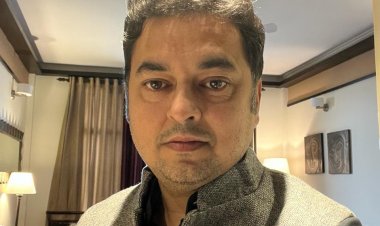Remembering 2022, How The M&E Sector Prospered That Year
The growth of M&E industry is flagging off to new heights with introduction to technology enhancement.

The Indian media and entertainment (M&E) sector is regarded as having tremendous room for economic expansion going forward and is undergoing significant changes and trends, notably in the East markets. The rising Average Revenue Per User (ARPU) and extraordinarily high volumes are two important features of the Indian M&E sector. The digital revolution and rising digital adoption, supported by less expensive and faster internet, rising consumer incomes and demand for content consumption, budget-friendly subscription deals, and rising advertising revenues, are the main drivers of its expansion.
According to a PwC report, the market is anticipated to reach $53.99 billion (Rs 430,401 crore) by the year 2026. Its advertising revenues are anticipated to amount to $5.42 billion by 2024. (Rs 394 billion). By 2024, television would account for over 40% of the Indian media market, followed by print media (13%), digital advertising (12%), movies (9%), over-the-top (OTT) content (8%), and gaming (13%).
Television
Avinash Pandey, CEO of ABP Network, commented on the themes affecting the Indian television industry in 2022 when asked about them: "In 2022, the television and news broadcast sector was defined by several major trends, developments, and concerns." First, a more fluid experience across several platforms was made possible by the convergence of media and technology. This made it possible for the sector to concentrate more on content distribution to reach a broader audience. Second, the proliferation of streaming services fundamentally altered how users access media material. Thirdly, the development of 5G networks made it possible for the material to stream more quickly, which improved the user experience. Fourthly, technology based on machine learning and artificial intelligence was employed to better target and customize ads.
When discussing how the television industry changed in 2022 compared to the previous three to four years, Pandey noted, "The year 2022 saw a major change in the industry." The development of immersive, interactive television experiences was made possible by new technology. Many newscasts now feature virtual reality, which immerses the viewer completely in the tale. In order to give the stories that were being broadcast more depth, augmented reality was also utilised. Because of this, viewers were better able to comprehend both the context and the content.
"New forms of interactive streaming were also being introduced," he continued. This made it possible for news stations to broadcast straight to the device of the user, enabling them to view news in real-time. This was a significant advance in keeping news viewers informed of current happenings. The television industry, and news channels, in particular, saw a significant change in 2022 as a result of technology that allowed established news organizations to remain relevant in the contemporary era. News has a brighter than ever future as the sector continues to develop.
OTT
By 2026, it is expected that the Indian OTT market would grow at a CAGR of 29.52% and reach $5.12 billion. Soumya Mukherjee, COO of hoichoi, spoke on the current OTT landscape in India, corporate developments in 2022, and goals for the year 2023. She said, "One thing that has seemed to dominate the OTT sector at now is the audience's propensity towards content rather than a platform. Because of OTT bundling and partnerships, audiences may access several platforms more easily and for much less money, exposing them to a huge library of material. As a result, people choose quality content over platforms, which is why hoichoi places more of an emphasis on onboarding producers to produce top-notch content. The year 2022 will be significant for hoichoi because it will not only mark the platform's fifth year of providing Bengalis around the world with entertainment and being the top vernacular OTT in the nation but also its creation and curation of 100+ originals, making it the only Indian OTT platform with a library of 100+ originals in a single language. This figure is about to soar as hoichoi announces 25 additional originals that will be released in the upcoming year, including 3 titles from Bangladesh and 22 titles from India.
In response to a question about how viewers interact with content on OTT platforms and on hoichoi, Mukherjee said, "It is a little difficult to segregate the OTT scenario in India based on the region in particular, while language plays a significant role at this time; the overlap of content across regions, be it within the country or outside, is significant. Hoichoi audiences, or Bengali-speaking audiences, have demonstrated a particular preference for family dramas and social dramas when it comes to significant trends. Subscriptions have significantly increased after titles in these categories. Our Bangladesh and experimental titles (material that tells non-stereotypical stories) are another thing that has done exceptionally well. The popularity of Bangladeshi content and the actors in these shows is also significantly rising, especially among our consumers in the east.
He stated the following while discussing hochoi's performance for the year: "Over the past year, hoichoi has experienced a 50% growth in direct subscribers with a 20% increase in streams in the post-lockdown time. Watch time has increased by 31%, Hoichoi still has one of the highest refresh rates in India for a single language and has seen a 30% growth in overseas customers. Along with the aforementioned expansion, as of August 2022, hoichoi is a PnL profitable firm. Additionally, this month has been significant because it has been the platform's biggest direct subscription revenue month across all three of its user base areas, namely, India, Bangladesh, and International Markets, each of which has contributed to the growth of over 100%.
He responded, "hoichoi sticks to and plans to continue with SVOD model moving forward, so I don't think hoichoi is thinking along the lines of an AVOD model. However, we do have some freemium content available on the site, and viewers can also watch a number of IPs on our Youtube channels. While these are unrelated to any specific titles, they help highlight Bengali culture and make it more relatable.
Radio
The Animation, Visual Effects, Gaming and Comic (AVGC) industry is expected to reach approximately $43.93 billion by the year 2024, according to Piyush Goyal, Union Minister of Commerce & Industry, Consumer Affairs & Food & Public Distribution and Textiles. Additionally, according to data sources, the online gaming industry is anticipated to reach $2.12 billion by 2023 and the mobile gaming business is anticipated to reach $7 billion by 2025. By 2024, it is expected that the music industry would generate $366 million. By 2025, it's expected that there will be 40–50 million connected smart televisions. Within the year 2025, 600–650 million Indians will watch short-form videos, with active viewers investing 55–60 minutes each day in the activity.
Key Development in the overall M&E Industry
The acquisition by Disney Hotstar of the exclusive rights for the television broadcast of the IPL from the years 2023 to 2027 is one of the major developments in the Indian M&E sector in the year 2022. The National Center of Excellence for the Animation, Gaming, Visual Effects, and Comics Industry will be established in Mumbai thanks to an agreement the GOI entered into. The governments of Canada and India have also agreed to collaborate on audio-visual projects to allow creators from both nations to share ideas and learn from one another's cultures in order to forge closer ties.
The media and entertainment sector grew by around 17% in 2022, reaching close to $25.2 billion (Rs 1.89 trillion), regaining its pre-pandemic levels from 2019, and is predicted to increase at a CAGR of 11% to reach $30.9 billion (Rs 2.32 trillion) by the year 2024, per the EY-FCCI research. Digital media has increased by Rs 68 billion in 2021. India's advertising business would exceed $1 trillion by 2024. More than 795 million broadband connections, 10 million connected TVs, more than 500 million smartphone users, 150 billion online music streams, 40 million Indian households with 80 million online video subscriptions, and 400 million consumers of packaged content are all present in India today. Conventional media is making a comeback in the post-Covid era after briefly declining. Both traditional and digital media will flourish and coexist in the Indian media landscape in the future, just as they do now.
"The pandemic has given us a lot to learn. But to be honest, none of us journalists or members of the media felt the pandemic's misery or tedium because we worked so hard during that time to inform people of the situation and what to do. The pandemic, therefore, taught us a valuable lesson. We worked hard and gained that knowledge. The post-pandemic age is crucial for us because, unlike during the pandemic, we now spend most of our time online. In addition to using the internet, we have discovered that any decision we make today must be made while keeping in mind the dangers and pandemic-related factors that we experienced during that time. This is especially true when we plan to work outdoors or travel to cover a major event like the Ukraine-Russian War. It might result in our death. But these are aspects of what we do. I advise all journalists to be as passionate about their work as they were before the pandemic but to exercise caution because if one is there, then their reporting will be there, and their mind-blowing work will be there as well. As a result, one should raise awareness, and the pandemic has taught us to think globally. Pew Roy, Senior Assistant Editor, TV9 Bangla, stated that this was the issue that had an impact on everyone in the world, regardless of socioeconomic status.
The media landscape in 2023 will be dominated by political tendencies, according to Roy. Politics is a topic that Indians, particularly those from Bengal, like discussing. People have begun to believe that politics determines the destiny and quality of life for every Indian and that religion and ideological differences also play a significant role in politics today.












